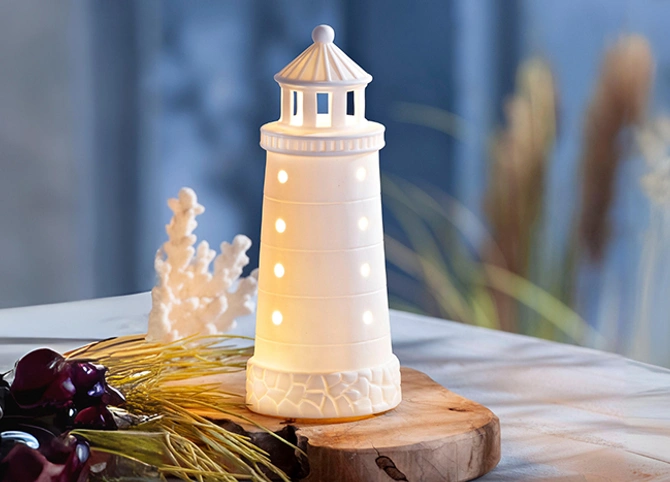Introduction
Welcome to the vibrant and enchanting world of peacocks, where nature’s palette meets graceful elegance. Peacocks, scientifically known as Pavo and Afropavo, are renowned for their dazzling plumage and majestic presence. Found predominantly in South Asia, including India and Sri Lanka, these birds have fascinated humans for centuries with their striking beauty and intricate behaviors.
Beyond their physical allure, peacocks hold significant cultural and symbolic meanings across various civilizations. In Hindu mythology, the peacock is associated with the goddess Saraswati, representing wisdom, knowledge, and learning. Similarly, in Greek mythology, the peacock is linked to Hera, the queen of the gods, symbolizing immortality and protection. Across different cultures, from Persia to Christianity, peacocks are often seen as symbols of integrity, beauty, and rejuvenation, reflecting their timeless appeal in art, literature, and folklore.
Peacocks have also inspired creativity and spiritual interpretations worldwide. Their vibrant plumage, adorned with iridescent hues of blue, green, and gold, has captivated artists, poets, and writers alike, becoming a motif of divine beauty and celestial grace. From ancient Mesopotamian seals to Renaissance paintings, peacocks have left an indelible mark on human culture, symbolizing pride, resurrection, and renewal.
In contemporary times, peacocks continue to hold cultural significance, appearing in fashion, design, and even corporate branding as a symbol of luxury and opulence. Their feathers, once a status symbol among nobility, now adorn haute couture runways and haute interiors, celebrating their timeless allure and visual splendor.
In this blog post, we will delve deeper into the world of peacocks, exploring their origins, anatomy, behaviors, cultural symbolism, and conservation efforts. Join us on a journey through the fascinating world of one of nature’s most iconic creatures, where beauty meets meaning in every shimmering feather and graceful strut.
Origins and Evolution of Peacocks
Peacocks, with their resplendent plumage and regal demeanor, trace their origins back through the annals of evolutionary history. Belonging to the family Phasianidae, which includes pheasants and partridges, peafowl are native to South Asia, specifically India and Sri Lanka. Their evolutionary journey spans millions of years, evolving distinct features that include their characteristic ornate feathers and robust physique. The earliest known fossil records of peafowl date back to the Pleistocene epoch, showcasing their endurance and adaptation across changing landscapes.
Peafowl are categorized into three main species: the Indian peafowl (Pavo cristatus), the Green peafowl (Pavo muticus), and the Congo peafowl (Afropavo congensis). Each species exhibits unique physical characteristics and geographic distribution. The Indian peafowl, renowned for its extravagant display of iridescent feathers, is the most widely recognized and is found across the Indian subcontinent. In contrast, the Green peafowl, distinguished by its vivid green and metallic blue plumage, inhabits the forests of Southeast Asia. The Congo peafowl, discovered in the dense rainforests of Central Africa, stands out with its subtle yet striking coloration.
Anatomy and Physical Characteristics
Peacocks are celebrated for their flamboyant appearance and striking physical attributes. The male peacock, known as a peacock, is characterized by its resplendent train of feathers, which can reach up to five feet in length. These feathers, adorned with iridescent hues of blue, green, and gold, are prominently displayed during courtship rituals to attract mates and establish dominance. In contrast, the female counterpart, the peahen, boasts a more understated appearance with subdued brown or gray plumage, allowing her to blend seamlessly into her surroundings to protect her offspring.
Beyond their plumage, peafowl exhibit distinct physical features that contribute to their survival and adaptation in diverse habitats. Their strong legs enable agile movement on the ground, while their keen eyesight and acute hearing serve as essential tools for detecting predators and locating food sources. Peacocks also possess a unique crest atop their heads, which adds to their majestic appearance and serves as a secondary sexual characteristic during courtship displays.
Behavioral Patterns
Peacocks exhibit a repertoire of complex behaviors that highlight their social dynamics and survival strategies. Central to their behavioral patterns are elaborate mating rituals, where male peacocks fan out their iridescent feathers into a shimmering display known as a “train.” This display, accompanied by vocalizations and rhythmic movements, serves to attract peahens and establish dominance over rival males. The successful male earns mating opportunities, contributing to the perpetuation of their genetic lineage.
In addition to mating rituals, peafowl display territorial behaviors to defend their preferred habitats and resources. Male peacocks vocalize loudly and engage in aggressive posturing to deter intruders and protect their nesting sites. Peahens, meanwhile, exhibit nurturing behaviors by constructing shallow nests lined with leaves and twigs to safeguard their eggs from potential threats. Peafowl are omnivorous, feeding on a varied diet that includes insects, seeds, fruits, and small reptiles. Their foraging habits are adapted to their natural habitats, which range from tropical forests to open grasslands, ensuring their ecological niche as both predator and prey.
Cultural and Symbolic Significance
Peacocks hold a profound cultural and symbolic significance across civilizations, embodying themes of beauty, spirituality, and resilience. In Hindu mythology, the peacock is associated with the goddess Saraswati, revered as the patroness of knowledge, music, and the arts. The peacock’s vibrant feathers symbolize wisdom and enlightenment, inspiring devotees to seek creativity and intellectual growth. Similarly, in Greek mythology, the peacock is linked to Hera, the queen of the gods, symbolizing immortality and protection. The peacock’s resplendent plumage was believed to represent the “eyes” of the stars, conveying divine guidance and cosmic order.
Beyond mythology, peacocks have garnered symbolic significance in religious contexts worldwide. In Christianity, the peacock symbolizes resurrection and immortality, with its plumage evoking the eternal cycle of life and rebirth. Early Christian art often depicted peacocks alongside angels and saints, illustrating their association with divine grace and heavenly splendor. In Persian culture, the peacock symbolizes royalty and power, adorning palaces and manuscripts as a symbol of opulence and prestige.
Peacocks continue to influence artistic expression and cultural symbolism in contemporary society. Their iconic feathers have inspired renowned artists, poets, and writers throughout history, becoming a motif of beauty, pride, and spiritual renewal. From ancient Mesopotamian seals to Renaissance paintings and modern literature, peacocks captivate the imagination with their timeless allure and symbolic depth.
Conservation Efforts and Threats
Despite their cultural significance and ecological importance, peafowl face numerous threats in the wild that jeopardize their survival. Habitat loss due to deforestation, agricultural expansion, and urban development poses a significant threat to peafowl populations, restricting their access to essential resources and breeding grounds. Human activities, including illegal hunting and wildlife trade, further exacerbate these challenges, disrupting natural ecosystems and diminishing peafowl numbers across their native range.
Conservation efforts are crucial to safeguarding peafowl species and their habitats from further decline. Organizations and wildlife reserves collaborate to implement conservation initiatives aimed at preserving critical habitats, promoting sustainable land use practices, and mitigating human-wildlife conflicts. Public awareness campaigns raise awareness about the importance of biodiversity conservation and encourage community involvement in wildlife protection efforts.
Through collaborative conservation efforts and responsible stewardship, peafowl populations can thrive in their natural habitats, contributing to the biodiversity and ecological balance of their ecosystems. By supporting conservation organizations and advocating for sustainable practices, individuals can play a vital role in ensuring a future where peacocks continue to enchant and inspire generations to come.
Peacocks in Art and Literature
Peacocks have long been celebrated as muse and motif in art, literature, and fashion, spanning centuries of human creativity and cultural expression. In art, the resplendent plumage of peacocks has inspired artists across diverse civilizations to depict these birds in various forms. Ancient Mesopotamian seals and Egyptian artworks often featured peacock motifs, symbolizing immortality and divine protection. In medieval Europe, illuminated manuscripts adorned with intricate peacock illustrations conveyed notions of wealth and spirituality, while Renaissance artists such as Leonardo da Vinci and Albrecht Dürer incorporated peacock symbolism into their masterpieces, reflecting the bird’s allure and symbolic depth.
Literature also reflects the enduring fascination with peacocks, portraying them as symbols of beauty, pride, and exoticism. Poets from ancient Greece to modern times have penned verses extolling the peacock’s majestic appearance and mythical associations. In Persian poetry, the peacock symbolizes longing and transcendence, evoking themes of love and spiritual enlightenment. Similarly, in Chinese literature, peacocks are revered for their elegance and grace, serving as metaphors for beauty and integrity.
In contemporary culture, peacocks continue to captivate as symbols of luxury and sophistication. Their iridescent feathers adorn haute couture fashion runways, embodying opulence and glamour. Designers incorporate peacock motifs into textiles and accessories, celebrating the bird’s timeless allure and aesthetic appeal. Beyond fashion, peacocks inspire interior design and decor, with their vibrant colors and intricate patterns lending a touch of elegance to home furnishings and art collections.
Fun Facts and Trivia
Peacocks are not just admired for their beauty; they also boast a wealth of fascinating facts and trivia that highlight their unique biology and behavior. Did you know that the distinctive train feathers of male peacocks can reach up to 6 feet in length and make up more than 60% of their body length? These feathers, adorned with iridescent “eye” markings, are primarily used during courtship displays to attract peahens and establish dominance over competing males.
In addition to their extravagant plumage, peacocks are renowned for their distinctive vocalizations, emitting loud calls that range from honks and squawks to melodious cries. These vocalizations serve various purposes, including communication within social groups, signaling alarm in response to predators, and expressing territorial dominance during mating rituals.
Peacocks also exhibit interesting behaviors related to their diet and habitat preferences. They are omnivorous birds with a diverse diet that includes insects, plants, small mammals, and even small reptiles. Their foraging habits are adapted to their natural habitats, which range from dense forests and grasslands to cultivated farmlands and urban parks.
In terms of reproduction, peafowl engage in complex mating rituals characterized by elaborate displays of plumage and vocalizations. During courtship, male peacocks perform intricate dance movements and shake their feathers to attract the attention of female peahens. Successful males earn mating opportunities based on the quality and intensity of their displays, ensuring the continuation of their genetic lineage.
These fun facts and trivia about peacocks underscore their remarkable adaptations, social behaviors, and ecological roles in their native habitats. As ambassadors of natural beauty and cultural symbolism, peacocks continue to captivate and inspire curiosity among enthusiasts and researchers alike.
Peacock Tourism and Popular Attractions
Peacocks are not just admired in the wild; they also attract visitors to popular tourist destinations around the world, where these birds thrive in natural habitats and public parks. In countries like India, Sri Lanka, and Myanmar, peacocks are iconic symbols of national pride and cultural heritage, often featured in folklore, art, and traditional festivals.
One of the most famous peacock attractions is the Peacock Garden (Mayur Vihar) in Udaipur, India, where visitors can observe peacocks roaming freely amidst lush gardens and historic architecture. The garden is renowned for its picturesque beauty and serene atmosphere, making it a popular destination for nature enthusiasts and photographers alike.
In Sri Lanka, the Yala National Park stands out as a premier wildlife sanctuary where visitors can encounter diverse wildlife species, including the majestic Indian peafowl. The park’s open grasslands and dense forests provide ideal habitats for peafowl to thrive, offering visitors unique opportunities to observe their natural behaviors and interactions in the wild.
For travelers seeking peacock encounters closer to home, botanical gardens and public parks in Europe and North America often feature resident peafowl populations. These urban oases provide sanctuary for peafowl amidst bustling cityscapes, allowing visitors to appreciate their beauty and learn about their ecological importance through educational programs and guided tours.
Whether exploring exotic destinations or enjoying local attractions, peacock tourism offers memorable experiences for wildlife enthusiasts and cultural adventurers alike. By supporting responsible tourism practices and conservation efforts, travelers can contribute to the preservation of peafowl habitats and ensure future generations can continue to marvel at these magnificent birds in their natural environments.





